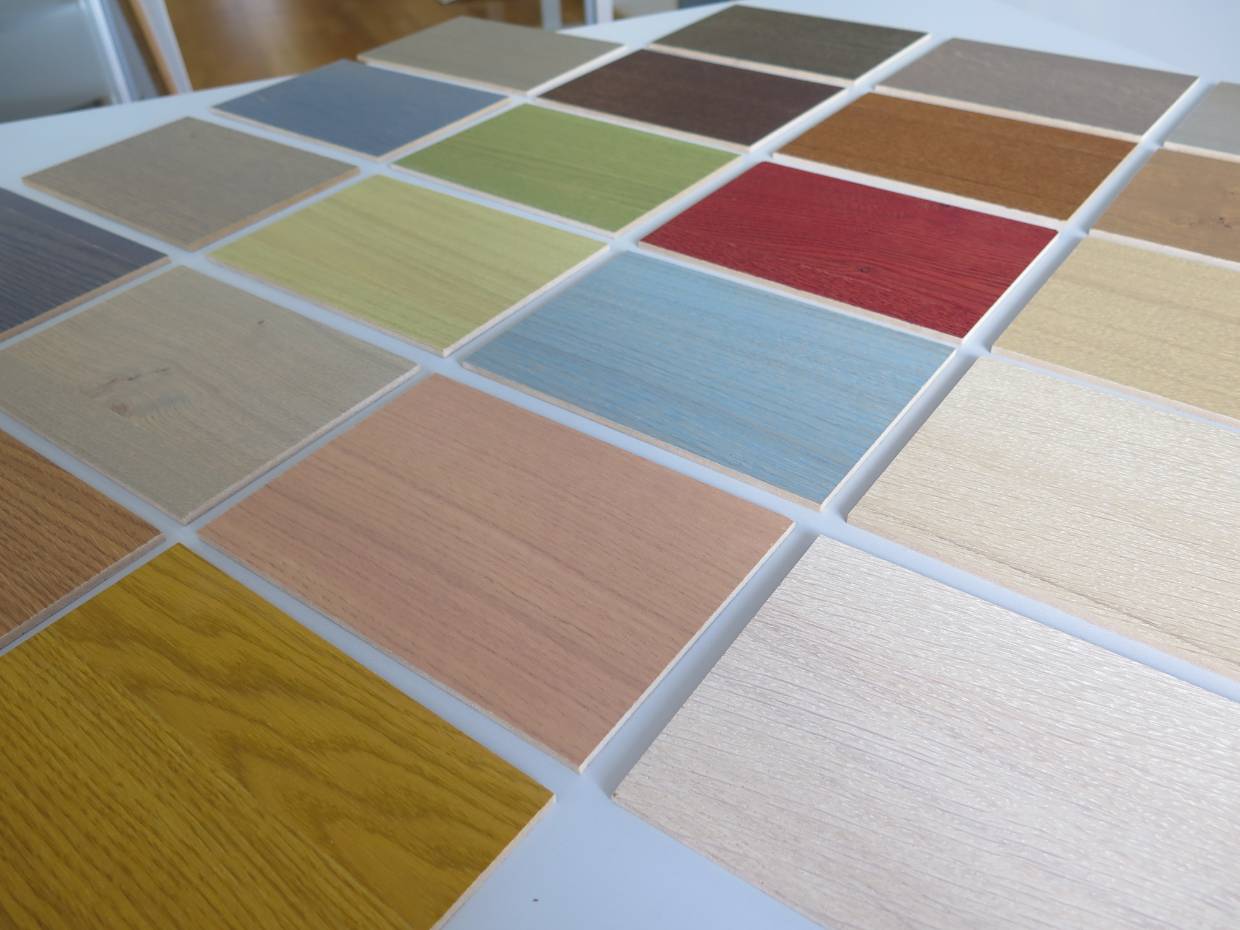

Oiled flooring: everything you need to know before choosing
30 august 2022
Oiled parquet is becoming increasingly popular. This is largely due to its aesthetics which delicately and warmly emphasizes the authenticity of the wood.
But before making the choice of this type of finish it is important to know the specificities of oiled parquet.
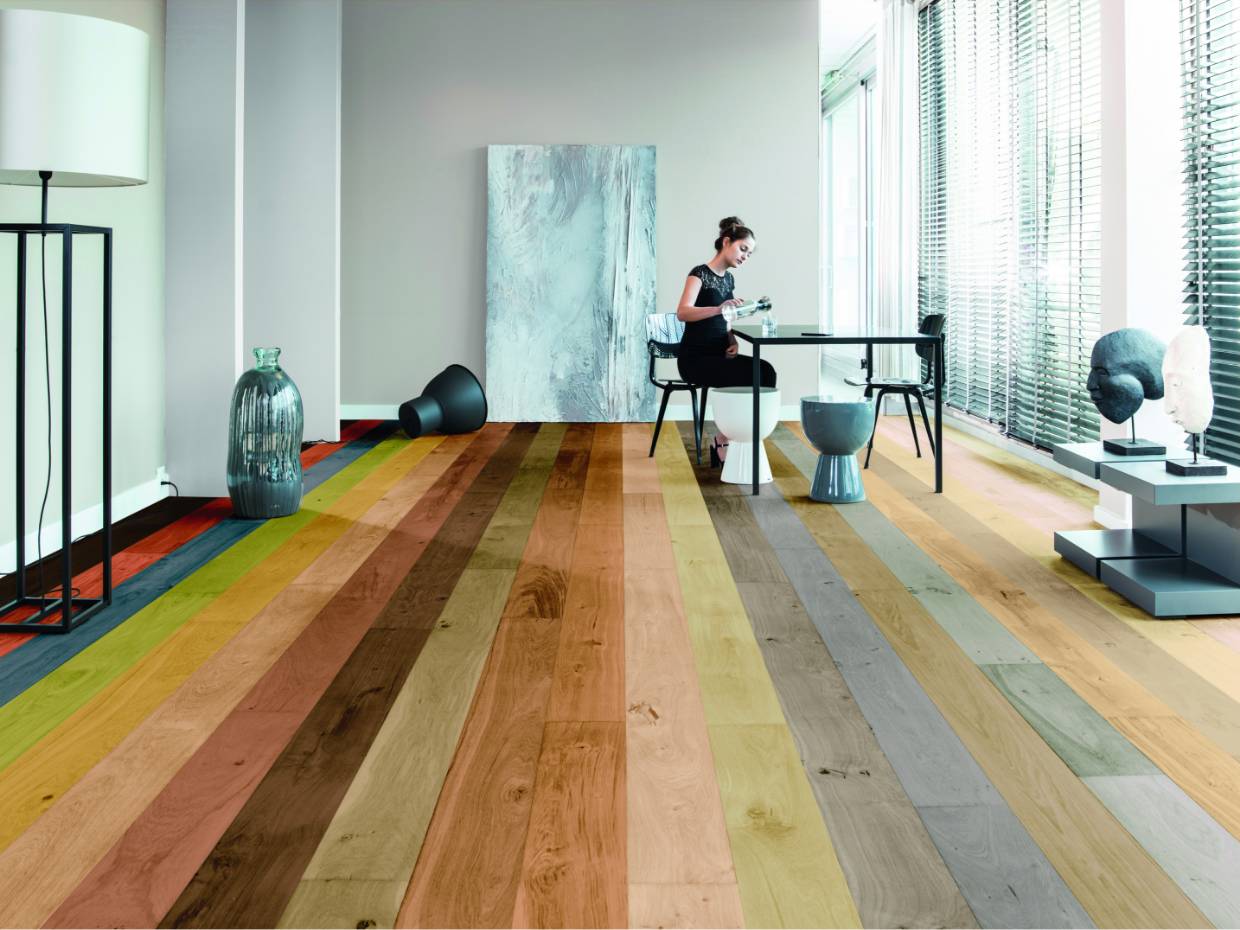

The range of colorful oil choices is impressive.
Definition: what is an oiled parquet.
To obtain this finish, special oil must be applied to the raw wood, which penetrates into the fibers and closes the pores on its surface. This process gives the wood its color, ensures its protection and, having a hardening effect, helps preserve its longevity.






Unlike a sealant (varnish) that will form a protective film on the surface of the floor, parquet oil will impregnate and nourish the surface of the wood to protect it from dust, stains and moisture. Its action is somewhat similar to that of the cream applied to shoes, which enhances the texture and natural appearance of the leather while protecting it.
The oil penetrates the wood and saturates its pores without leaving a film-forming effect, allowing the wood to “breathe” and thus participate in regulating the humidity of the air in a room, unlike varnished parquet which closes the pores of the wood and hinders its breathing.
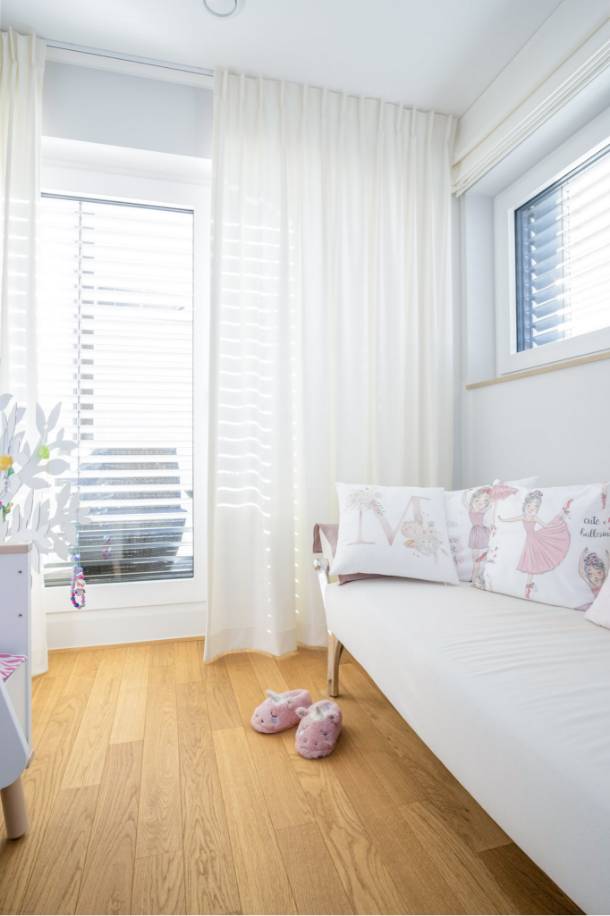

“BOEN Maxi Langstab” parquet in oiled natural oak
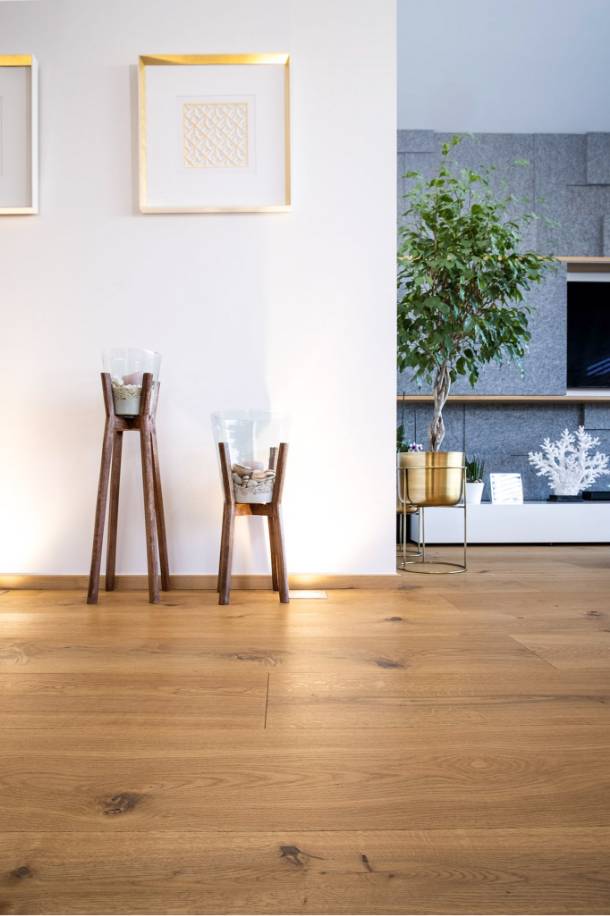

“Drüsedau Kellerwald-Diele Natura” parquet in oak “Charakter” oiled
How to maintain oiled parquet?
The maintenance of oiled parquet is a little more constraining than that of varnished parquet because it is necessary to (re)oil the wood from time to time. On a daily basis, a vacuum cleaner or a static cotton cloth will do the trick.
You will find more details on the maintenance of your parquet in this other article of our blog.
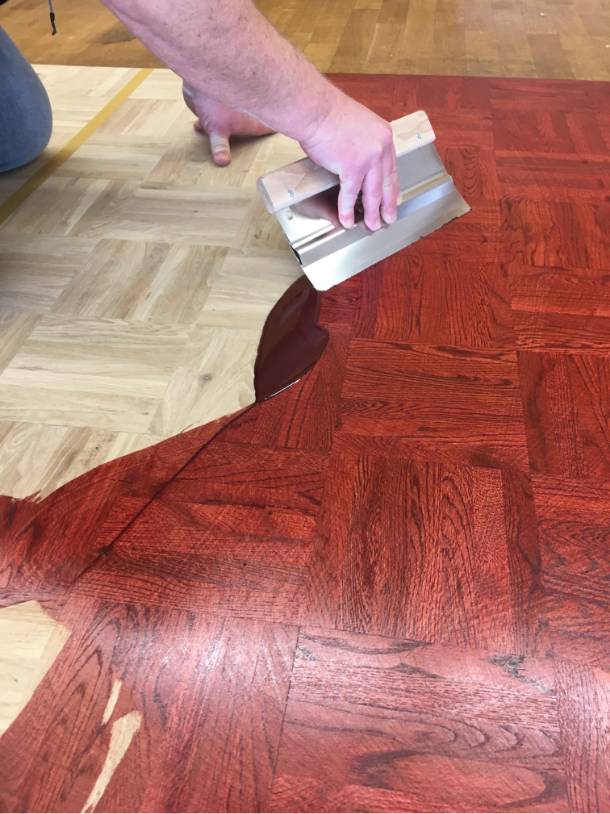

Application of colored oil on a raw floor
Big advantage: it can be repaired
One of the big advantages of oiled parquet is that in case of deep scratches or stains that do not go away with cleaning, it is possible to sand it locally – even on a small area – and then to (re)oil it to give it back its original aspect. There is however a small drawback to this spot renovation because a difference in color will be visible between the renovated part and the rest of the floor. Indeed, wood is like human skin, it “tans” under the effect of UV. Sanding will remove this natural color that accumulates over time.
If the scratches are too deep and sanding is not sufficient, it is also possible to change a floorboard without having to change the adjacent floorboards or having to sand the entire room.
Parquet oil is for the environmentally conscious
Oil manufacturers are making great efforts to make their products more and more environmentally friendly, and it is even possible to use pure vegetable oils (such as linseed oil) that meet all environmental requirements.


There is a wide choice of colors
If the wood has not already been oiled in the factory, you can choose the color you want to give the raw wood once the floor is installed.
As you can see on the pictures below there are many choices of colors.
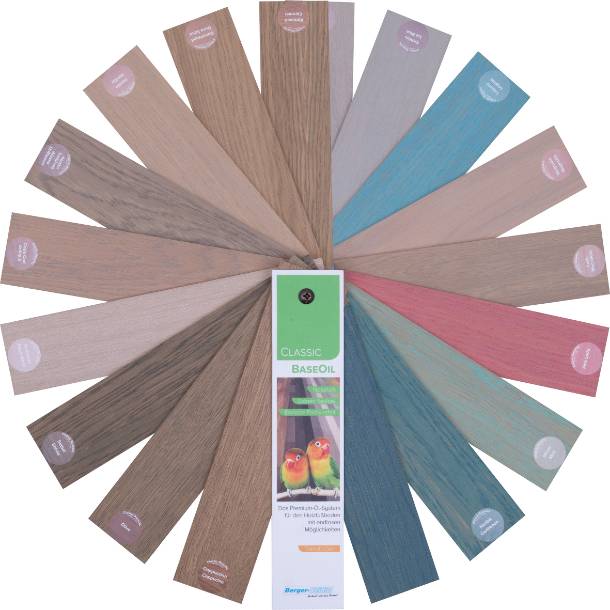

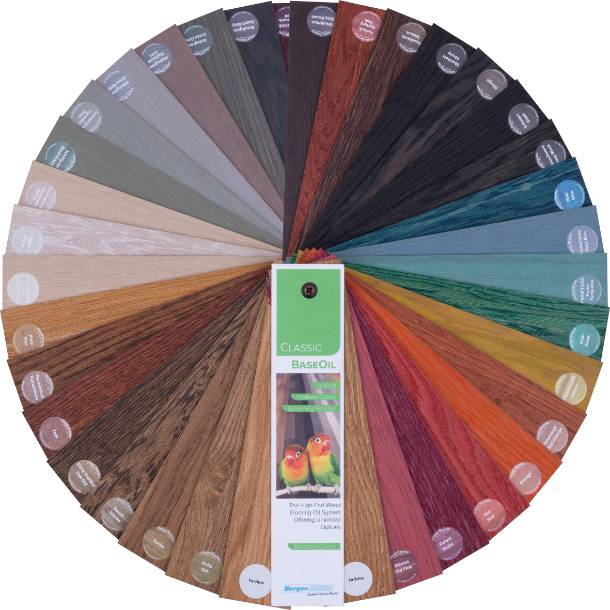

Berger-Seidle Color Oil Palette
Oiled floors become more beautiful over time
A well-maintained oiled floor acquires more and more character over the years as it develops a patina. The oil embellishes the wood over time.
The oil that is applied to the wood respects its natural appearance and magnifies it with renderings that are both raw and very soft to the touch.
Conclusion
Oiling does require a little extra effort in terms of maintenance, but it does give you some flexibility in terms of repairing and renovating from time to time, which extends the life of the floor.
The downtime before you can enjoy your room again is much faster with oil (12 to 24 hours) than with varnish.
Finally, the choice of this type of finish also depends on your taste. To help you in your choice, to allow you to discover the different woods available and the different possible shades, come and meet us in our showroom, we have many samples to show you and we will advise you free of charge and without obligation.
